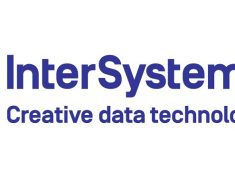Venu Mallarapu, VP of Global Strategy & Operations at eClinical Solutions

It’s no surprise that generative artificial intelligence (gen AI) has reached its peak in hype, as we experienced rapid adoption and accelerated interest over the last year. According to the 2023 Gartner Hype Cycle for Artificial Intelligence, we’re at the top of inflated expectations, and as experts have speculated, gen AI’s full potential as a transformative technology has yet to be fully realized.
So, what does this mean for the life sciences industry? We can anticipate seeing several big changes within the industry over the next year. These include:
Gen AI will be the panacea: ChatGPT created shock and awe across the world in 2023 after its initial launch in November 2022, and while we’ve reached the peak of gen AI hype, the practical application of gen AI within the life sciences industry has yet to materialize and have a lasting impact. Over the next year, a lot of mindshare and budgets will be focused on bringing this to fruition for 2024.
Death of decentralized clinical trials (DCTs): One realization we took away from this past year is that DCTs never needed to be considered a separate category. The hype around all the DCT platform unicorns has reached its end, and many of them will be forced to build the technology and service provider ecosystem to help with adoption for long-term use. Some might call this the “death of DCT,” but I prefer to call it the “death of hype around DCT.” While DCTs are here to stay, the expectations and adoption will forever change. The value delivered by DCTs is far greater than simply a useful way to run clinical research during a pandemic, and these value props will become embedded in clinical research as we continue with the evolution of digital clinical trials. Over the next year, the industry will hit the reset button and identify more pragmatic adoption.
Modern data architectures will be unavoidable: The industry has been sitting on a treasure trove of data, and there’s been an explosion of growth with millions of data points gathered for every study. Traditional data architectures—data warehouses and data lakes—are past their lifespan to support current and future needs. In 2024, we’ll see companies increase investments in modernizing data architectures to handle the 5 ‘V’s of data (volume, value, variety, velocity, and veracity). This will increase the ease of sharing data and the availability of data payloads for training, testing, and validating machine learning models. We’ll also begin to see a shift towards electronic data capture-free trials, with the potential for electronic health record data to feed directly into data infrastructure over the next one to two years.
Data-driven content generation: Imagine being able to create a study protocol or a clinical summary report or a DSUR/PSUR, derived from data, with the click of a button. The industry is primed to increase the adoption of data-driven, structured content authoring to create documents required to start, conduct, and submit proof to prove the safety and efficacy of investigational products. With the increased use of machine learning and gen AI in life sciences, data-driven content generation will find more success in the coming year.
Metaverse in clinical research: I had anticipated the adoption of the metaverse in clinical research for 2023, and it looks as if it’s finally increasing in traction. The introduction of Apple Vision Pro and subsequent investment and products announced by Meta and others are paving the way for mainstream adoption of augmented reality and virtual reality, which will slowly but steadily find its way into clinical research. Use cases include virtual reality exposure therapy, 3D visualization of data, as well as collaboration and communication among researchers in the virtual world.
Conversational & predictive analytics: As advances of gen AI are realized, like ChatGPT’s ability to handle audio and visual content, the ability to build platforms and systems capable of delivering more accurate predictive and conversational analytics is increasing tremendously. This year conversational analytics for decision-making will see mainstream adoption, and predictive analytics for scientific and operational decision-making will take off. The use of gen AI and machine learning are key to the success of both.
Gen AI and machine learning are transforming our approach to clinical research. Combined with other technological advances, this will drive innovation and disruptive trends in clinical research technology going forward in 2024. In parallel, there is a need for industry collaboration around regulatory changes, data privacy and security, and system interoperability. The lessons learned as we go forward will pave the way for more practical uses of gen AI in clinical research driving ROI and efficiency.
Venu Mallarapu, VP of Global Strategy & Operations at eClinical Solutions





